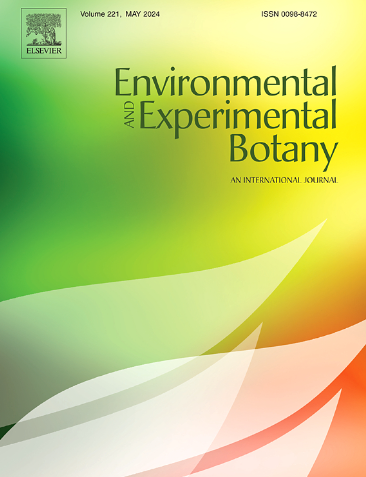整合转录组学和代谢组学,揭示槲寄生在不同寄主上的关键代谢机制
IF 4.5
2区 生物学
Q2 ENVIRONMENTAL SCIENCES
引用次数: 0
摘要
槲寄生(科马属)Nakai)是一种具有药用和烹饪用途的寄生植物,但其对宿主物种的寄生机制在很大程度上尚未被探索。在这项研究中,我们对寄生在椴上的槲寄生枝叶进行了转录组学和代谢组学的综合分析。榆木、乌苏里杨。,研究槲寄生受这些寄主影响的潜在分子和代谢机制。我们的研究结果揭示了槲寄生枝和叶的转录信息在不同寄主物种之间的显著差异,这也反映在它们的代谢谱上。在转录水平上,脂质代谢、碳水化合物代谢和氨基酸代谢是受不同宿主影响的主要途径。类黄酮和脂质是槲寄生代谢谱的主要差异成分。综合代谢组学和转录组学分析表明,由脂质组成的甘油磷脂代谢是槲寄生寄生在宿主上活动的重要途径。在这一途径中,大多数代谢物如LysoPC和大多数基因如LYPLA2和DPP1在紫椴中表达水平最高。寄生在黑椴上的槲寄生。无论是在枝上还是在叶上,均表现出极显著的差异。这些发现为槲寄生活动的分子机制以及不同宿主如何影响其转录和代谢谱提供了关键的见解。本文章由计算机程序翻译,如有差异,请以英文原文为准。
Integrating transcriptomics and metabolomics to uncover key metabolic mechanisms of mistletoe parasitism on diverse hosts
Mistletoe (Viscum coloratum (Komar.) Nakai) is a parasitic plant with medicinal and culinary uses, yet its parasitic mechanisms on host species are largely unexplored. In this study, we performed an integrated transcriptomic and metabolomic analysis of mistletoe branches and leaves parasitizing on Tilia amurensis Rupr., Ulmus pumila L., and Populus ussuriensis Kom., investigating the potential molecular and metabolic mechanisms of mistletoe influenced by these hosts. Our results revealed notable differences in the transcriptional information of mistletoe branches and leaves across various host species, which was also reflected in their metabolic profiles. At the transcriptional level, lipid metabolism, carbohydrate metabolism and amino acid metabolism were the main pathway influenced by various hosts. Flavonoids and lipids were the primary differential components in the metabolic profile of mistletoe. Combined metabolomic and transcriptomic analyses demonstrated that glycerophospholipid metabolism comprising lipids, was a vital pathway for the activities of mistletoe parasites on their hosts. In this pathway, most metabolites, such as LysoPC, and the majority of genes, such as LYPLA2 and DPP1, exhibited the highest expression levels in Tilia amurensis Rupr. Mistletoe parasitizing Tilia amurensis Rupr., whether on branches or leaves, exhibited very significant differences compared to those parasitizing Ulmus pumila L. and Populus ussuriensis Kom. The findings provide key insights into the molecular mechanisms of mistletoe’s parasitic activities and how different hosts affect its transcriptional and metabolic profiles.
求助全文
通过发布文献求助,成功后即可免费获取论文全文。
去求助
来源期刊

Environmental and Experimental Botany
环境科学-环境科学
CiteScore
9.30
自引率
5.30%
发文量
342
审稿时长
26 days
期刊介绍:
Environmental and Experimental Botany (EEB) publishes research papers on the physical, chemical, biological, molecular mechanisms and processes involved in the responses of plants to their environment.
In addition to research papers, the journal includes review articles. Submission is in agreement with the Editors-in-Chief.
The Journal also publishes special issues which are built by invited guest editors and are related to the main themes of EEB.
The areas covered by the Journal include:
(1) Responses of plants to heavy metals and pollutants
(2) Plant/water interactions (salinity, drought, flooding)
(3) Responses of plants to radiations ranging from UV-B to infrared
(4) Plant/atmosphere relations (ozone, CO2 , temperature)
(5) Global change impacts on plant ecophysiology
(6) Biotic interactions involving environmental factors.
 求助内容:
求助内容: 应助结果提醒方式:
应助结果提醒方式:


